Your website is often the first impression a customer has of your business. Keeping it running smoothly is not just about avoiding errors; it is about protecting your reputation and ensuring a great user experience. Website maintenance can feel like a chore that constantly gets pushed to the bottom of the list. Between running your business, managing your team, and serving your customers, who has the time?
The good news is you can take much of this work off your plate. Automating website maintenance allows you to handle crucial tasks efficiently without constant manual effort. This frees you up to focus on what you do best which is growing your business.
This guide will show you how to automate key aspects of website maintenance. We will cover everything from backups and security to performance checks and content updates. You will learn practical steps to create a system that works for you, ensuring your site remains secure, fast, and reliable in 2026 and beyond.
Why Automate Your Website Maintenance?
Manually checking your website every day is not a practical use of your time. Automation offers a smarter way to manage your digital presence.
First, it saves an incredible amount of time. Repetitive tasks like creating backups or checking for broken links can be scheduled to run automatically. This consistency is something manual checks can miss. A task forgotten one week could be the very thing that causes a problem.
Second, automation improves your website’s security. Automated tools can scan for malware and security vulnerabilities around the clock. They can apply security patches as soon as they are released, closing potential entry points for attackers before they can be exploited. For example, a small ecommerce store could use an automated security plugin to patch a vulnerability overnight, preventing a data breach that could have happened while the owner was asleep.
Finally, automation helps maintain optimal performance. Slow loading times can drive visitors away. Automated tools can monitor your site’s speed, optimize images, and clean up your database regularly. This ensures your website is always fast and responsive for your visitors. This is a core part of providing a good user experience.
Key Areas for Website Maintenance Automation
You do not have to automate everything at once. Start with the tasks that have the biggest impact and offer the most significant time savings.
1. Automated Website Backups
A recent backup is your ultimate safety net. If your site is hacked, a server fails, or a simple update goes wrong, a backup allows you to restore it quickly. Manually backing up your site is easy to forget, which is why automation is essential.
How to Automate It:
- Hosting Provider Solutions: Many hosting providers like WP Engine or Kinsta offer automatic daily backups as part of their service plans. This is often the easiest option. Simply check your hosting dashboard to configure the settings.
- Website Platform Plugins: For platforms like WordPress, plugins such as UpdraftPlus or BlogVault are excellent choices. You can schedule backups to run daily or weekly and have them automatically saved to a secure cloud location like Google Drive, Dropbox, or Amazon S3. For instance, a local bakery could set its WordPress site to back up every night at 2 AM, ensuring the latest menu changes and blog posts are always safe.
2. Security Monitoring and Updates
Website security is an ongoing battle. New threats emerge constantly, and keeping your site’s software updated is one of your best defenses.
How to Automate It:
- Security Scanners: Tools like Sucuri or Wordfence can be set to automatically scan your website for malware, blacklisting status, and vulnerabilities. If an issue is found, you will receive an immediate alert, allowing you to take action.
- Automatic Updates: Most modern content management systems, including WordPress, offer the option to enable automatic updates for the core software, plugins, and themes. While this is convenient, it is wise to be cautious. A faulty update can sometimes cause issues. A good practice is to enable automatic updates for minor security releases but to test major updates on a staging site first. This gives you the security benefit without the risk.
3. Performance and Uptime Monitoring
A slow or unavailable website leads to lost traffic and revenue. You need to know the moment your site has a problem, not learn about it from an unhappy customer.
How to Automate It:
- Uptime Monitoring: Services like UptimeRobot or Pingdom will check your website every few minutes from different locations around the world. If your site goes down, you will get an instant notification via email or text message. Many of these services offer a free plan that is perfect for small businesses.
- Performance Optimization: Tools like WP Rocket for WordPress can automate many performance optimizations. They can cache your pages, minify CSS and JavaScript files, and optimize your database with just a few clicks. Image optimization plugins like Smush can automatically compress new images you upload, ensuring they do not slow down your site. A startup blog, for example, could use these tools to ensure its articles load quickly for all readers, improving its search engine rankings.
4. Link Checking and SEO Audits
Broken links create a poor user experience and can harm your SEO. Regularly checking for them, along with other SEO issues, is important for maintaining your site’s health.
How to Automate It:
- Broken Link Checkers: There are numerous tools available that can crawl your website and identify broken links. For WordPress users, the Broken Link Checker plugin can run in the background and notify you of any issues directly in your dashboard. Online tools like Ahrefs or SEMrush also include site audit features that can be scheduled to run weekly or monthly, providing a comprehensive report of broken links and other SEO problems.
- Automated SEO Audits: The site audit features in tools like SEMrush do more than just check links. They can monitor your site for common SEO issues such as missing title tags, duplicate content, and slow page speeds. Setting up a recurring weekly audit can help you stay on top of your site’s search engine optimization without manual spot checks.
Building Your Automation Workflow
Implementing these tools is the first step. Creating a cohesive workflow ensures nothing falls through the cracks.
Start by choosing the right tools for your platform and budget. Many powerful automation tools offer free versions or affordable plans for small businesses.
Next, configure your notification settings carefully. You want to be alerted to critical issues like your site being down, but you probably do not need an email every time a minor database cleanup occurs. Direct urgent alerts to your phone and routine reports to your email.
Finally, schedule a monthly manual review. Automation is powerful, but it is not a complete replacement for human oversight. Once a month, take 30 minutes to review your automated reports, check your backup logs, and manually test a few key pages on your site. This quick checkup ensures your automation systems are working as expected and gives you peace of mind.
At MoDuet, we help businesses like yours implement smart digital strategies. If you want to take your website management to the next level, our team is here to help you build a robust and efficient system. Contact us today to learn more about our website management services.
We Want To Talk To You About Your Marketing Goals.
Let’s Supercharge Your Online Growth!












